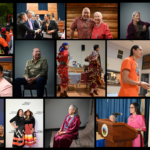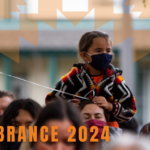Each year, September 30 marks the National Day for Truth and Reconciliation. While the National Day for Truth and Reconciliation originated in Canada, it was adopted in the U.S. as the National Day of Remembrance for those who attended Indian boarding schools.
The day honors the children who never returned home and Survivors of boarding schools, as well as their families and communities. Public commemoration of the tragic and painful history and ongoing impacts of residential schools is a vital component of the reconciliation and healing process.
In Canada, this federal statutory holiday was created through legislative amendments made by Parliament.
The following resources can help people gain a better understanding of the National Day of Remembrance, along with curriculum and best practices for anyone doing an in-person event.
For people looking to learn more about the importance of this day:
- Truth and Reconciliation: A long journey to healing (Indian Country Today)
- National Day of Remembrance for Indian Boarding Schools (Medium)
- Canada makes September 30 a national holiday (CBC)
- National Day for Truth and Reconciliation (Government of Canada)
- Learn about Orange Shirt Day
- NABS Day of Remembrance 2021
For governments or organizations looking for examples of support:
- Truth & Healing Commission Bill
- Proclamation for “Day for Truth and Reconciliation” (Carlisle Borough)
- U.S. Senate Resolution (117th Congress: S.Con.Res.28)
- U.S. House Resolution (117th Congress: H.Con.Res.53)
- Support for Truth and Healing on Indian Boarding Schools: NCAI Resolution
- BlueCross/Blue Shield Support: Honoring the National Day of Remembrance for Indian Boarding Schools
For educators looking for curriculum:
- NABS Truth and Healing Curriculum
- Oregon State, 8th Grade
- NIEA Trauma Informed Research
- Stewart Indian School Defines Historical Trauma
- PBS Lesson Plan: Native American Boarding Schools and Human Rights
- Ziibiwing Supplementary Curriculum Guide
- Smithsonian Curriculum
Best practices for holding in-person events:
Understanding that public events focusing on the history of boarding schools can bring up powerful emotions, the Coalition has posted some tips on caring for survivors and their families in healing informed ways.
- Determine what trauma experts or community healers you need present to support survivors and descendants both during attendance of the event and after
- Provide follow up resources so attendees can continue their healing journey after the event ends
- Ensure traditional plant medicines are available for smudging individuals and the space (provide these as care packages if you are hosting a virtual event).
- Recognize the differing comfort levels of survivors when it comes to speaking publicly, sharing their story, standing in front of a group, even identifying as a survivor, and respect their boundaries.
- Ensure that elders and survivors have a place of honor in the space. If you know how many will be in attendance, consider wrapping survivors in blankets or offering a gift
- Have a private space available for processing emotions, identifying that space clearly (can be a separate virtual or physical meeting room).
- Do not have this as the only event or only time you speak on Native Americans. Hopefully acknowledging the Day of Remembrance will be an addition to your education on the history of Native Americans.
To learn more, visit NABS Day of Remembrance 2021








